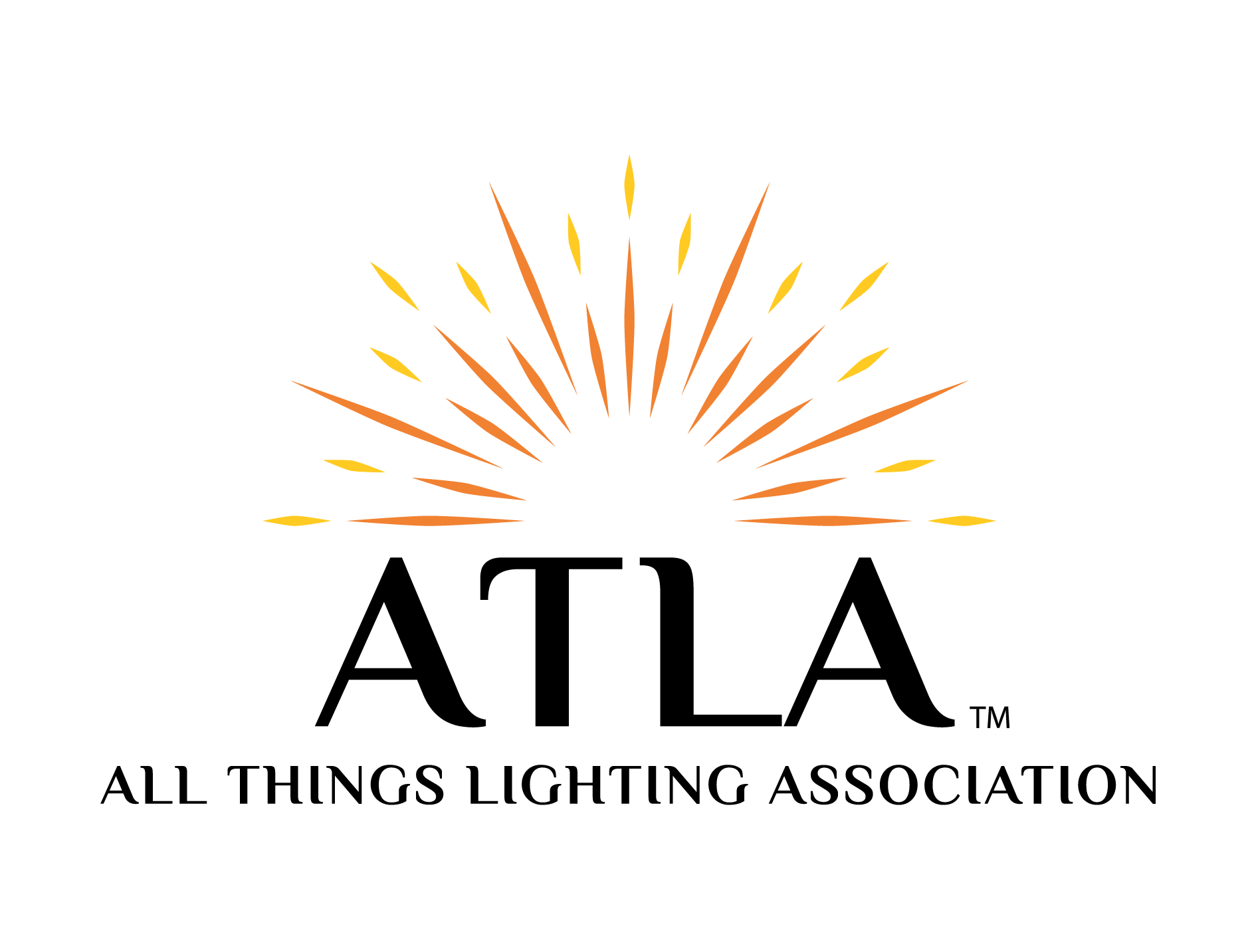In these unfortunate times, it seems that everyone is looking for ways to help with the COVID-19 crisis. From a lighting designer’s perspective, one solution is obvious: ultraviolet radiation. We have known about the disinfectant properties of ultraviolet radiation for nearly 150 years (Downes and Blunt 1877), and we have been using low-pressure mercury arc lamps to kill bacteria and inactivate viruses for the past 85 years (Wells and Fair 1935).
My initial goal in writing this article had been to discuss ultraviolet germicidal irradiation (UVGI) methods and materials, but this work was pre-empted by the Illuminating Engineering Society’s Photobiology Committee and their excellent report, IES CR-2-20-V1, Germicidal Ultraviolet (GUV) – Frequently Asked Questions.
I can highly recommend this publication for any questions related to ultraviolet disinfection and germicidal lamps, as it is written so as to be accessible to both lighting professionals and the general public. However, there is one small but critical omission that needs to be addressed.
Consumer Interests
Many consumers are currently interested in ultraviolet sterilizers for home use. Earlier this month, Forbes published an article titled, “Seven of the Best UV Sterilizers for Phones and Other Household Objects.” These devices included a USB UV sanitizer wand, two UV smartphone cleaning cases, a UV water bottle purifier cap, a portable UV sterilizer for small items such as baby pacifiers, an ultraviolet LED sanitization box, and a 25-watt germicidal lamp. Six of these are reasonable and perfectly safe if used correctly. The seventh … well, we need some background to explain the problem.
The ABCs of Ultraviolet
The Commission Internationale de l’Eclairage (CIE) divides the ultraviolet region of the electromagnetic spectrum into three subregions according to wavelength:
| Name | Wavelength Range |
| Ultraviolet A (UV-A) | 315 nm – 400 nm |
| Ultraviolet B (UV-B) | 280 nm – 315 nm |
| Ultraviolet C (UV-C) | 100 nm – 280 nm |
Table 1 – Ultraviolet classification
In the natural environment, the only significant source of ultraviolet radiation is sunlight. As the solar spectrum shown in Figure 1 shows, this radiation is only a small fraction of the total radiation received from the Sun. Our atmosphere fortunately absorbs much of the carcinogenic UV-B radiation at sea level, and essentially all of the UV-C radiation, thanks to the Earth’s ozone layer. The risk of exposure to UV-C radiation is therefore entirely from electric light sources.
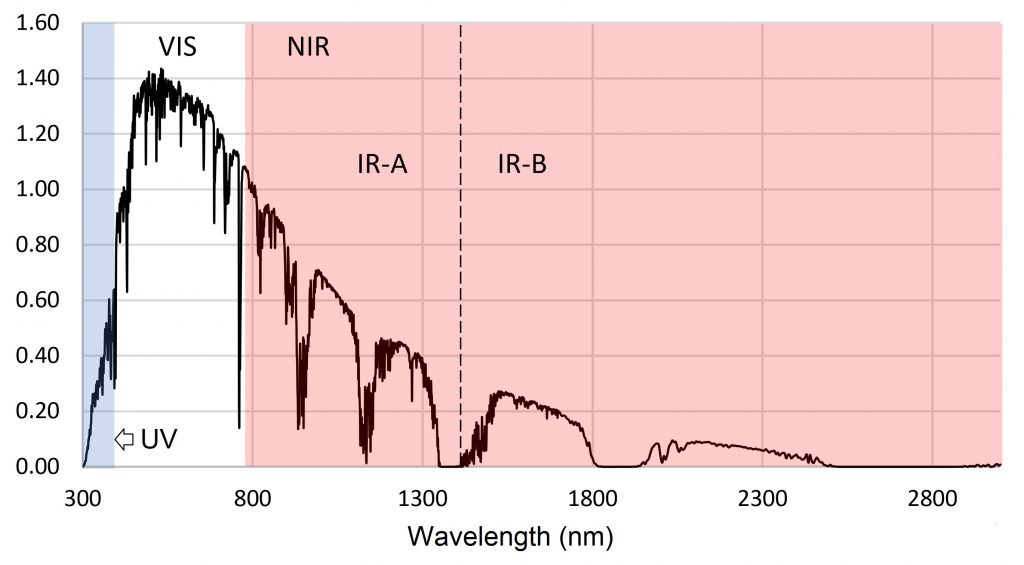
Now, there are several types of light sources that emit UV-C radiation, but only low-pressure mercury arc lamps and UV-C light-emitting diodes (LEDs) are found in consumer products. We can therefore ignore high-pressure mercury arc lamps, pulsed xenon arc lamps, and krypton-chlorine excimer lamps – this article is about ultraviolet disinfection solution for consumers.
History
In 1931, F. L. Gates demonstrated that UV-C radiation effectively kills bacteria and protozoa, and inactivates viruses. Using a high-pressure mercury-vapor arc lamp, he produced an “action spectrum” showing effectiveness versus wavelength (Gates 1931). He further noted that this spectrum was very similar to the absorbance spectrum of deoxynucleic acid (DNA), and correctly surmised that the radiation was terminally disrupting the DNA molecules (Figure 2).
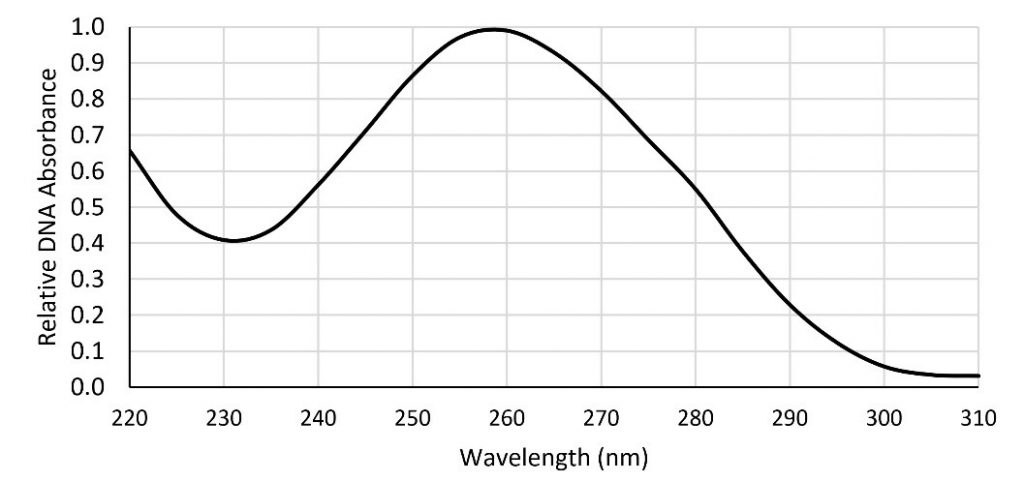
The advantage of low-pressure mercury arc lamps is that they emit monochromatic UV-C radiation at 254 nanometers, which is close to the 265 nm peak of Gates’ action spectrum. Even better, these lamps are basically the same as compact and linear fluorescent lamps, but with two important differences: 1) they do not have a phosphor coating to convert the ultraviolet radiation into visible light; and 2) they use fused quartz or soda-lime “soft” glass rather than borosilicate glass for their envelopes. (Fused quartz is transparent at UV-C wavelengths, whereas borosilicate glass is opaque.)
UV-C Exposure Limits
The problem with germicidal lamps is that exposure to UV-C radiation can irritate the eyes and skin. These irritations are technically photokeratitis (“snow blindness” or “welder’s flash”), photoconjunctivitis (“pink eye”), and erythema (sunburn). This medical terminology belies the seriousness of the issue, but a short paper by Trevisan et al. (2006) puts it into perspective.
In 2005, twenty-six medical students attended a 90-minute anatomy lesson in an autopsy room at the University of Padova in Italy. There were three autopsy tables, above each of which was mounted a single 40-watt germicidal lamp. A timer turned the lamps on at 7:00 PM and off at 7:00 AM; the lesson began at 8:30 AM.
Unfortunately for the students involved, the timer failed. They were dressed in protection suits against biological risk, but their eyes and the skin of their faces, scalps and necks were exposed to UV-C radiation for the duration of the lesson. As is common with UV-C exposure, the onset of symptoms occurred on average four hours afterwards. For the eyes, these included a burning sensation, excessive tearing, pain, blurry vision, hindrance to open, conjunctival redness, eyelid swelling, and photophobia. For the skin, the symptoms included acute sunburn, a burning sensation, irritation, and pain. The paper further noted an ocular “foreign body sensation,” which translates into a feeling of having sand constantly in your eyes. These problems lasted two to four days, but six students afterwards reported persistent scurf (flaking of the skin), and one of persistent dryness of the skin.
There are two important points here: 1) the lamps were basically 40-watt linear fluorescent lamps; and 2) the exposure time was only 90 minutes. The horizontal irradiance was later measured and found to vary between 50 μW/cm2 at the level of the autopsy table to 250 μW/cm2 one meter below the germicidal lamps. To put this into perspective, a horizontal illuminance of 500 lux is equivalent to approximately 250 μW/cm2 of visible light.
The American Conference of Governmental Industrial Hygienists recommends a maximum UV-C exposure dose limit for a workday of 3.0 millijoules per square centimeter (ACGIH 2020). For a period of 90 minutes, this translates into an effective irradiance of 0.6 μW/cm2. The students exceeded this recommendation by a factor of 100 to 400 times.
UV-C at Home
You might dismiss the misfortune of the medical students as an unfortunate workplace accident. After all, who would want to have a high-power germicidal lamp in their home?
… which brings us to the seventh UV sterilizer listed in the Forbes article:
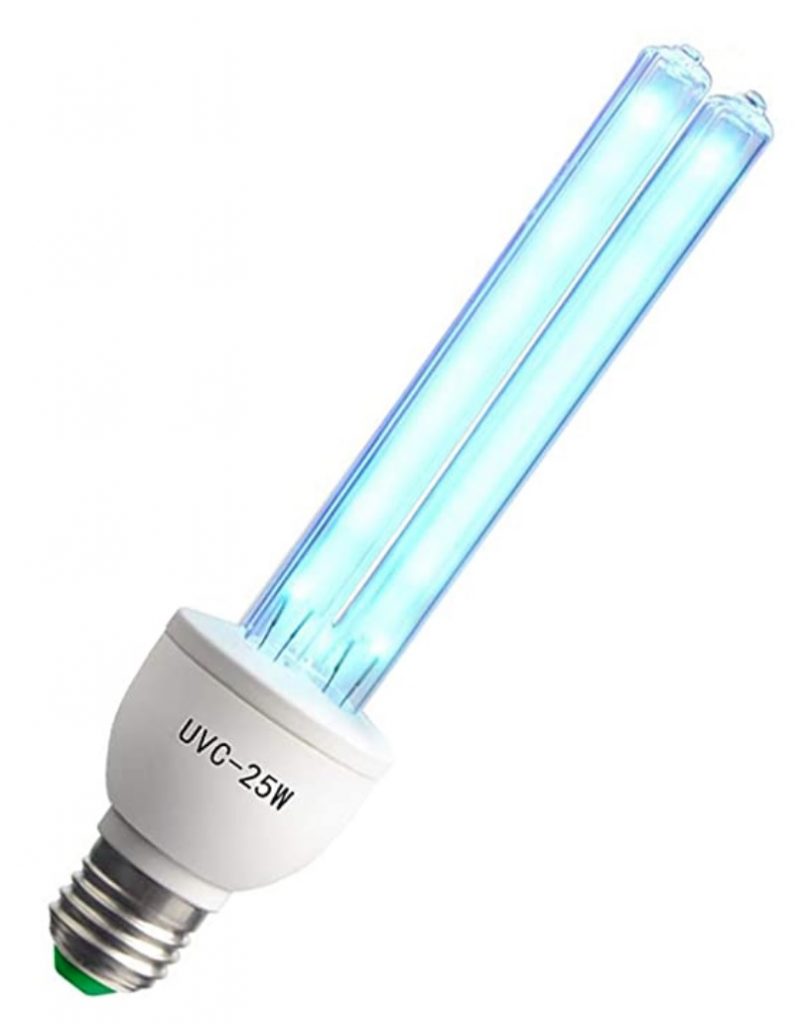
The description of this lamp reads, “UV Germicidal Bulb 25w E26/E27 Screw Socket UV Light Bulb 110 Volt, UVC Ozone Free.” It was priced at $35 on 2020/04/02, but is currently (two weeks later) priced at $75. It is clearly a product that is in demand, although the description is less than reassuring:
“When this bulb lit, will immediately have a special smell in the air, it means it worked, this special smell comes from burnt harmful smalls by the UVC ray, just like the smell in the hospital.”
Th manufacturer explicitly states that this product has a quartz envelope and emits 253.7 nm UV-C radiation, but … 25 watts? Considering the medical distress that the medical students suffered from 40-watt lamps, surely this is incorrect?
Apparently not, for the manufacturer also claims that it will sanitize up to 400 square feet (37 square meters) in 15 to 60 minutes, making it “suitable for basement, bathroom, school, canteen, kindergarten, home, salon, closet, hotel … shoe cabinet, dog/chicken house, toilet …” and so on. The Forbes reviewer helpfully added that, “This UV bulb can be screwed into any standard light socket in your home or office.”
Nowhere on the Amazon Web page is there any mention as to how dangerous the output from a 25-watt germicidal lamp can be. “Wait,” you say, “surely this product has to comply with the relevant government regulations designed to protect consumers from such unseen dangers?”
If you are an American, the Occupational Safety and Health Administration has this to say as a standards interpretation: “… there are no OSHA-mandated employee exposure limits to ultraviolet radiation.” If you are a Canadian, the Canadian Center for Occupational Health and Safety says, “There are no Canadian regulatory occupational exposure limits for UV radiation. Many jurisdictions follow the limits recommended by the American Conference of Governmental Industrial Hygienists (ACGIH).”
There are government standards regulating the emission of UV-B radiation from suntanning beds and ultraviolet emissions from white-light mercury vapor lamps … but apparently nothing for UV-C disinfectant lamps. In other words, dear consumer, caveat emptor.
Wild West
With no regulations to constrain them, manufacturers of high-power UV-C disinfection lamps are free to sell whatever they want to the unsuspecting consumer … and Amazon is assuredly there to help them. Enter “150 watt UV ozone” in the search bar for www.amazon.com and you will get over 140 results like this:
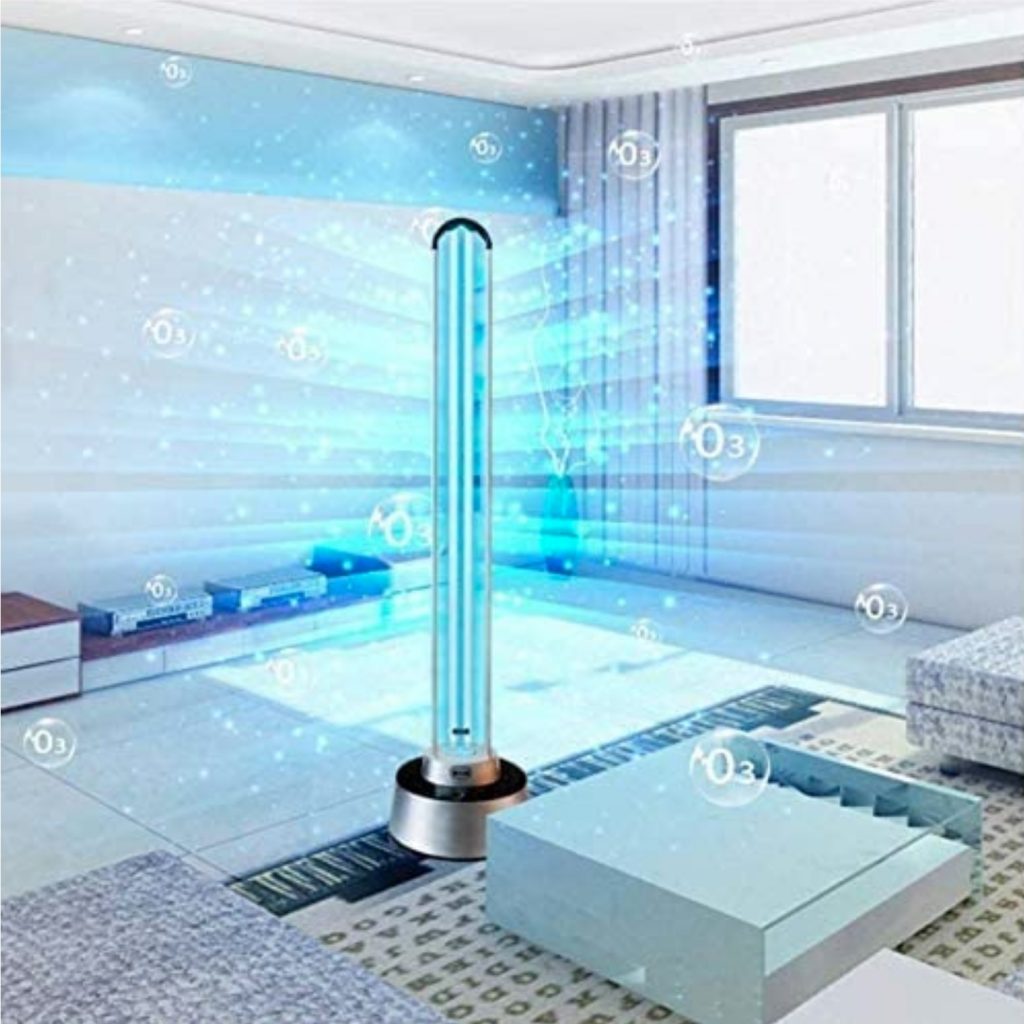
There are a number of reasons to be suspicious about the manufacturer’s claims for this product, but suppose we take the 150-watt electrical input power at face value. We can reasonably assume that the lamp ballast (remember that it is essentially a linear fluorescent lamp) has an efficiency of 90 percent. This means that 135 watts is being delivered to the mercury-vapor arc.
The radiant efficiency of a low-pressure mercury arc is about 45 percent, while the UV-C transmittance of fused quartz is about 90 percent, and so the lamp is emitting 55 watts of UV-C radiation.
The lamp itself, despite its outsized appearance in FIG. 4, is about 80 cm high. If we were to place a 60 cm diameter by 80 cm long tube over this lamp, it would have an inside surface area of roughly 15,000 cm2. The UV-C irradiance of this surface would therefore be 5.5 x 107 microwatts divided by 1.5 x 104 square centimeters, or about 3,650 μW/cm2 – over 6,000 times the ACGIH-recommended limit for 90 minutes’ exposure!
How can you tell whether the unit is activated? Ultraviolet radiation is by definition invisible, but someone sitting next to the unit in the dark, possibly watching television, may eventually notice a pretty violet glow around the lamp electrodes (Fig. 5). This will alert them that they will become mightily uncomfortable two to six hours later.
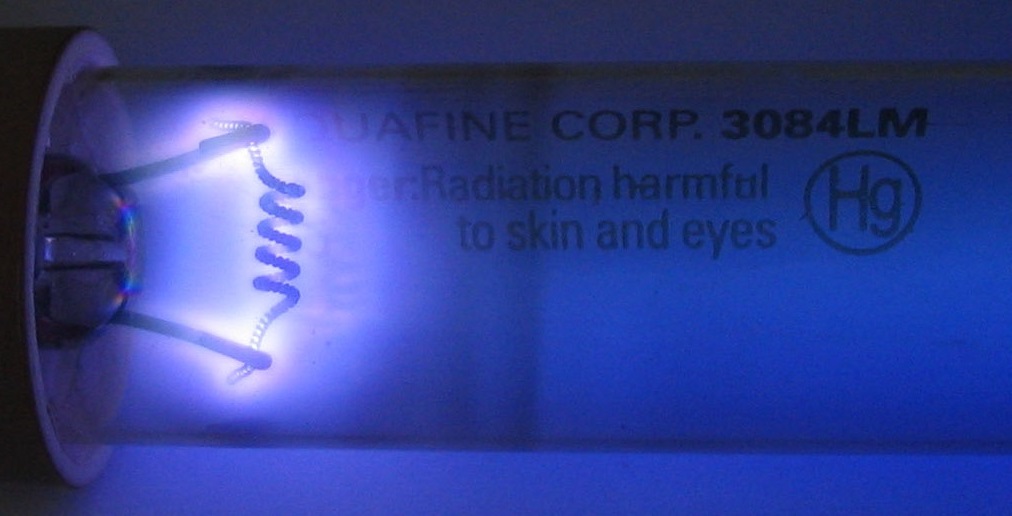
One reason to be suspicious about the manufacturer’s claims for this product is that it supposedly generates ozone. According to the manufacturer, “Ozone has sterilization and disinfection, in addition to formaldehyde and odor, ozone can fill the entire room without being affected by obstructions.”
Whatever the claim of formaldehyde refers to, ozone is a particularly toxic gas, even in minute concentrations of 0.1 parts per million (ppm). It smells like chlorine gas, and it can cause similar (and severe) damage to respiratory tissues. A low-pressure mercury arc emits both 254 nm and 185 nm UV-C radiation. The shorter wavelength radiation is capable of ionizing the molecular oxygen in the air surrounding the lamp and so create ozone, but the quartz or soft glass envelopes of UV disinfection lamps are doped such that they are opaque to 185 nm radiation. Some UV-C lamps do emit ozone, but they are only used for industrial applications such as municipal water disinfection (where it replaces chlorine).
Product safety information? The description for a similar product reads, “Do not look directly at the germicidal light source. Absorbing too much ultraviolet light can cause skin irritation and conjunctival damage.” This is regrettably what we get in the absence of enforced government regulations.
There are reasons to suspect some of the manufacturers’ descriptions of these products (many of which are identical apart from the manufacturer’s name), particularly when one manufacturer states that the product has an “ozone mode” and an “ozone-free mode,” where the latter is suitable for pregnant women and the elderly. How the doping of a quartz envelope designed to block 185 nm radiation from ionizing the surrounding air can be toggled on and off with the simple flip of a switch is left unexplained.
With over 140 products like these to choose from, the average consumer should feel … absolutely petrified.
But rest assured! If you are concerned about your health, searching for “UV disinfection COVID” yields at least 20 UV sterilizer products that are available for purchase. One blatantly states, “Kill 99% COVID-19,” while another features a 10-watt battery-powered flashlight marketed as a “UVC Germicidal Lamp” with “Brightness: about 500 lumens.”
My favorite, however, must be the “UV COVID Indoor Sterilizer” shown in Figure 6. Lighting designers will understandably suspect that this is a theatrical LED luminaire, but the manufacturer assures us that it (somehow) emits “Ultraviolet wavelength of 253.7 nm.” Oh yes, and it can also be used for aromatherapy!
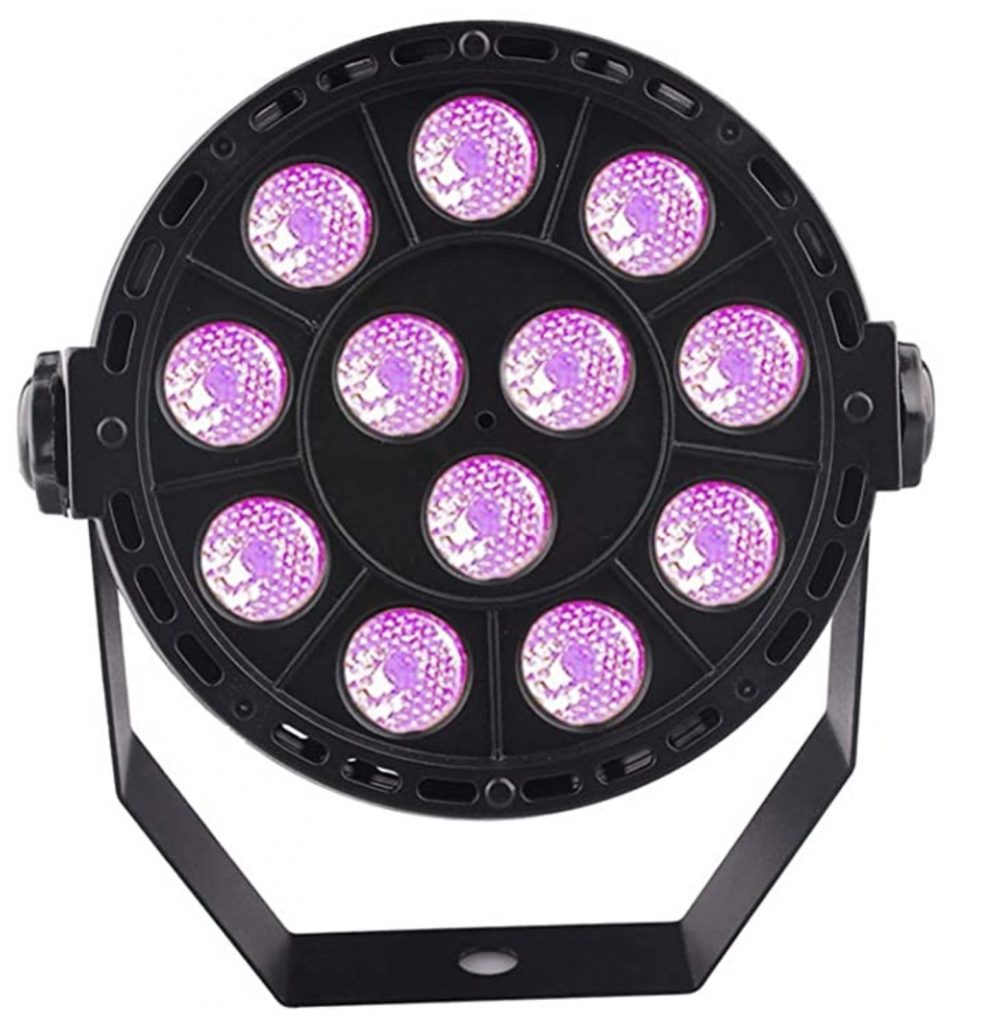
Conclusion
We are now living in different times, but one thing will always be the same: wherever there is a dire situation, there will be those among us willing and able to take advantage of our fears and gullibility. Say the words “ultraviolet disinfection” today and you will appreciate what technology has brought us – an online marketplace for charlatans and their wonderous pills that cure all ills.
UPDATE 20/04/23
For Europeans, the relevant standard concerning ultraviolet radiation in the workplace is Table 1.1 of EU-OSHA Directive 2006/25/EC, which specifies a maximum daily exposure to UV-C radiation of 30 J/m2, which is equivalent to the ACGIH recommendation of 3 mJ/cm2. The related publication “Non-binding Guide to Good Practice for Implementing Directive 2006/25/EC, Artificial Optical Radiation” (EC 2010) is highly recommended as an information source.
Worldwide, ISO 15858:2016, UV-C Devices – Safety Information – Permissible Human Exposure applies. This standard is applicable to in-duct UV-C systems, upper-air in room UV-C systems, portable in-room disinfection UV-C devices, and any other UV-C devices that may cause UV-C exposure to humans.
UPDATE 20/04/24
I am indebted to my colleague Dieter Lang of LEDVANCE for the following information and illustrations from his LinkedIn posting, “The Visible Spectrum of Mercury Low Pressure Lamps for Disinfection”:
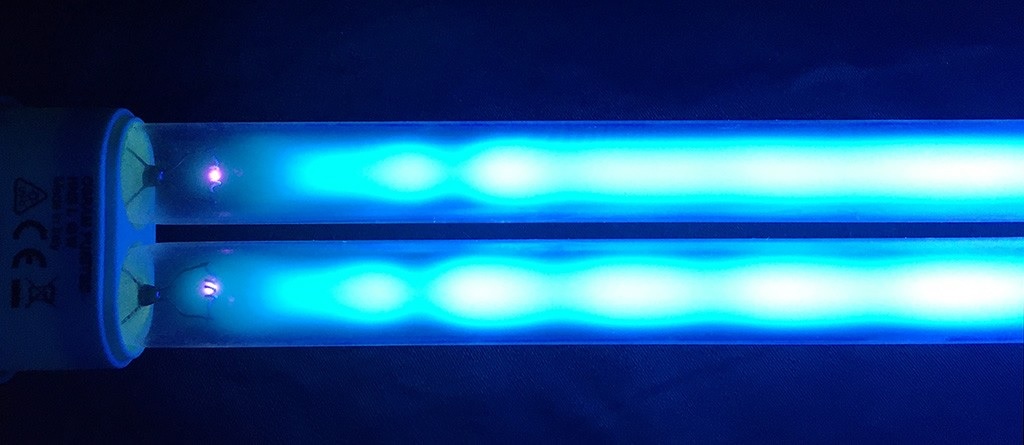
He also provided a useful and informative visible light spectrum for these lamps:
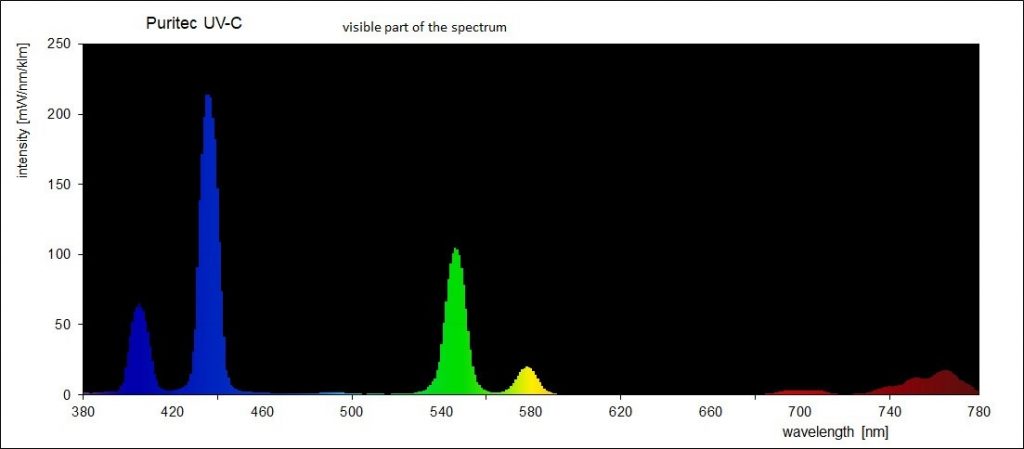
As Dieter writes, “The color shown in the photograph above is quite close to the real visual impression … of course you need to avoid looking at such a lamp without suitable eye protection.”
With this, I readily acknowledge that Figure 5 is somewhat misleading — it should be evident that high-power UV-C germicidal lamps are activated when viewed in a darkened room. Unfortunately, it was impossible to find photographs of such lamps in use that had not been doctored for advertising purposes (e.g., FIG. 4) by the manufacturer.
References
ACGIH. 2020. Ultraviolet Radiation: TLV(R) Physical Agents 7th Edition Documentation. Cincinnati, OH: American Conference of Governmental Industrial Hygienists.
Downes, A., and T. P. Blunt. 1877. “Researches on the Effect of Light Upon Bacteria and Other Organisms,” Proc. Royal Society of London 26:488-500.
EC. 2006. Directive 2006/25/EC – Artificial Optical Radiation. European Commission.
EC. 2010. Non-binding Guide to Good Practice for Implementing Directive 2006/25/EC, Artificial Optical Radiation.” European Commission.
Gates, F. L. 1931. “The Absorption of Ultraviolet Light by Bacteria,” J. General Physiology 14:31-42.
ISO. 2016. ISO 15858:2016, UV-C Devices – Safety Information – Permissible Human Exposure.
Trevisan, A., et al. 2006. “Unusual High Exposure to Ultraviolet-C Radiation,” Photochemistry and Photobiology 82:1077-1079.
SCHEER. 2017. Scientific Committee on Health, Environmental and Emerging Risks: Opinion on Biological Effects of UV-C Radiation Relevant to Health with Particular Reference to UV-C lamps, European Commission.
Wells, W. F., and M. G. Fair. 1935. “Viability of B. coli Exposed to Ultraviolet Radiation in Air,” Science 82:280-281.
